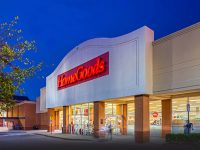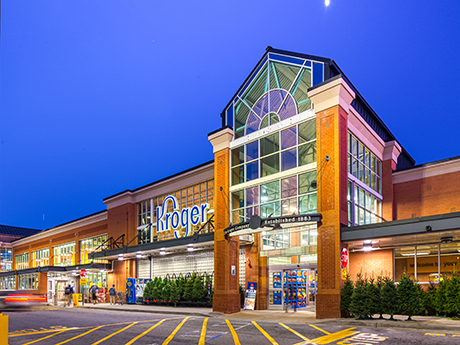Multi-tenant shopping centers are gaining favor with investors.
British entrepreneur and adventurer Sir Richard Branson, head of Virgin Group Ltd., said, “Every success story is a tale of constant adaption, revision and change.” Certainly, as retailers grappled with the impact of COVID-19 restrictions, those that could quickly pivot and adapt were the winners. Even Charles Darwin said, “It is not the strongest of the species that survive, nor the most intelligent, but the one most responsive to change.”
Looking back on the past few years in retail, American consumers were already shifting their purchasing habits. These shifts include experience-spending versus material goods and homes; casual fashion in response to more relaxed dress codes; convenient online ordering, delivery services and drive-thru pick-up for time-starved consumers; as well as the rise of e-commerce, mostly in the form of competition from Amazon.com and Walmart. However, once the lockdowns occurred in response to the pandemic, emerging trends such as online ordering, mobile delivery and omnichannel became permanent.
Other 2020 trends that made nearly daily headlines were the number of retailers and restaurant companies that had filed for bankruptcy or were closing stores. Coresight Research reported 8,953 closures last year as the COVID-19 pandemic upended the retail industry. Little discussion centered on 3,298 openings in 2020 and the fact that, in 2019, retailers in the United States announced 9,302 store closings, a 59 percent jump from 2018, and the highest number since tracking began in 2012. Even with the COVID-19 pandemic still weighing on physical retail, retailers in the U.S. collectively plan to open 3,344 stores so far this year (versus 2,649 closures), according to Coresight.
“The rollout of the COVID vaccine keeps ramping up, another round of stimulus checks is landing in many Americans’ bank accounts, and companies are by and large predicting a strong rebound of the consumer,” CNBC reported. “The National Retail Federation is forecasting retail sales in the U.S. could grow anywhere between 6.5 percent and 8.2 percent this year, with the economy accelerating at its fastest clip in two decades.”
Retail sales surged 9.8 percent in March with sporting goods, clothing and food and beverage leading the gains in spending as more Americans are vaccinated, business restrictions are rolled back and people begin to resume normal daily activities. These sales contributed to the best month for retail since the May 2020 gain of 18.3 percent, which came after the first round of stimulus checks. Sales were up year-over-year by 27.7 percent in March, which continues to create optimism for the retail industry.
Other recent reports showed the economy is gaining steam, too: unemployment claims fell to a pandemic-era low, with 576,000 Americans applying for state aid, according to the U.S. Department of Labor. At the same time, employers added 916,000 jobs in March, the most since August (this is nearly double the gain in February — inspiring optimism that the labor market has emerged from the pandemic’s grip).
Other positive signs for the retail industry include a steady improvement in retail rent collections as COVID-19 restrictions are lifted. In February, rent collections surpassed 90 percent among national retailers for the first time since March 2020, when the pandemic began, according to research from Datex Property Solutions. In the same month last year, national retailers paid more than 93 percent of rents, showing that retailers in this category are inching closer to pre-pandemic performance.
Retailers have taken notice and are looking to reinvigorate their expansion plans. Some of the retailers looking to expand in 2021 include Target, Amazon, Burlington Stores, Dick’s Sporting Goods, ULTA Beauty, Sephora, Old Navy, TJX Companies (TJ Maxx, Marshalls, HomeGoods and HomeSense), Ross Stores, Five Below, Aldi, Lidl, Sprouts Farmers Market, Trader Joe’s, Dollar General, Dollar Tree, Starbucks and Dutch Bros, 7-Eleven, Chipotle Mexican Grill, Sonic Drive-In, Taco Bell, McDonald’s, Bank of America, Chase, O’Reilly Auto Parts, plus so many others.
Another avenue of expansion is through mergers and acquisitions, which continues to speak to the retail market’s positive outlook. Tractor Supply Co. announced in February 2021, that it will acquire the network of 167 Orscheln Farm and Home stores operating in 11 states. Orscheln Farm and Home sells tools, apparel and sporting goods, along with traditional farm supplies.
In late December, Sportsman’s Warehouse, a leading outdoor specialty company based in the western U.S. with 112 store locations, announced it had entered into a definitive agreement to join the Great American Outdoors Group, the parent company of Bass Pro Shops, Cabela’s, White River Marine Group, and a collection of nature-based resorts.
Earlier in December, Bed Bath & Beyond announced it will sell Cost Plus World Market as it aims to stabilize sales and focus on its core business. The home goods retailer announced that it has struck an agreement with Los Angeles-based private equity firm, Kingswood Capital Management, which will buy Cost Plus World Market for an undisclosed amount.
Kimco Realty (NYSE: KIM) announced in April that it plans to acquire fellow retail real estate investment trust (REIT) Weingarten Realty Investors (NYSE: WRI) for $3.87 billion in a cash-and-stock. The merger will create a national operating portfolio of 559 open-air grocery-anchored shopping centers and mixed-use assets encompassing roughly 100 million square feet of gross leasable area. This transaction could drive an acceleration of mergers and acquisitions in the REIT sector as REITs look to grow their scale and boost returns as the economy emerges from the pandemic.
Another positive sign is that lenders are back in the market. During the peak of COVID, lenders were not even quoting on multi-tenant retail properties. However, starting in late summer 2020, lenders put a toe in the market and were offering 55 percent loan-to-value (LTV) with onerous reserves due to rent collection issues. Today, investors are happy to see that lenders are offering up to 70 percent LTV for quality multi-tenant retail properties with no additional “COVID” reserves. Depending on the deal, current interest rates as of late April were 25 basis points lower than pre-COVID.
Furthermore, multi-tenant retail investors who sat on the sidelines during the height of the pandemic are now shopping for acquisitions but, with little to no new product coming on the market, higher demand and low inventory are driving cap rates for high-quality retail assets to compress below pre-COVID levels. Hanley Investment Group is seeing demand accelerate for anchored and shadow-anchored multi-tenant retail properties in many markets around the country, particularly in suburban markets in states that have had a less restrictive response to the pandemic.

Hanley Investment Group represented a California 1031-exchange buyer in the recent $20 million purchase of Cofer Crossing, a fully leased 136,139-square-foot shopping center anchored by Kroger and HomeGoods and shadowed by Walmart located in the Atlanta-area community of Tucker, Georgia. The seller was a partnership between SITE Centers Corp. and Madison International Realty.
For example, Hanley Investment Group recently represented a California 1031 exchange buyer in the purchase of Alpharetta Commons, a 94,500-square-foot, 98.7 percent occupied shopping center anchored by Publix Super Markets in one of northern Fulton County’s most affluent suburbs, Alpharetta in the Atlanta metro area. The sale price was $24.6 million. The average household income within a three-mile radius of the property is over $163,000 for the 86,000 residents. Nearly 209,000 people reside within five miles of the shopping center. The seller was an institutional real estate owner, operator and developer of a national portfolio.
Hanley Investment Group also represented a California exchange buyer in the recent purchase of Cofer Crossing, a fully leased 136,139-square-foot shopping center anchored by Kroger and HomeGoods located in the Atlanta-area community of Tucker, Georgia. The sale price was $20 million. Cofer Crossing is shadowed by Walmart, and Kroger recently acquired a former Shell Station located at the entrance of Cofer Crossing, which has since been renovated into a new Kroger Fuel Center, reflecting Kroger’s commitment to the property. The seller was a partnership between SITE Centers Corp. and Madison International Realty.
In late October, Hanley Investment Group arranged the sale of a sizable, unanchored strip center in Southern California, Village Plaza at Huntington Harbour, a 20,328-square-foot multi-tenant retail center with over 270 feet of prime Pacific Coast Highway frontage in Huntington Beach. The 91 percent occupied restaurant and lifestyle-themed shopping center offered the private buyer a secure and stable income stream with excellent lease-up potential for the remaining 9 percent of the shopping center, a prime 1,744-square-foot endcap space.
Fueling demand and transaction volume is the concern over a proposed increase in capital gains tax in 2022 as well as the possible modification or elimination of 1031 exchange benefits. Other factors include the expanding number of multifamily investors who are trading out of California apartment buildings in search of out-of-state single-tenant and multi-tenant retail properties that have fewer management issues and are located in states that have less government interference.
With little to no new inventory being added, and more buyers jumping into the buyer pool in the $1 million to $20 million range, we expect to see more aggressive pricing in the coming months for shadow-anchored multi-tenant retail pad buildings that surpasses pre-COVID levels. Grocery-anchored shopping centers will be the most sought-after retail investment as the pandemic led to a 14 percent increase in U.S. household grocery spending, according to new research, which also aided “daily needs” customer traffic at these centers.
— By Kevin Fryman, Executive Vice President at Hanley Investment Group. This article first appeared in the May 2021 issue of Shopping Center Business magazine.


